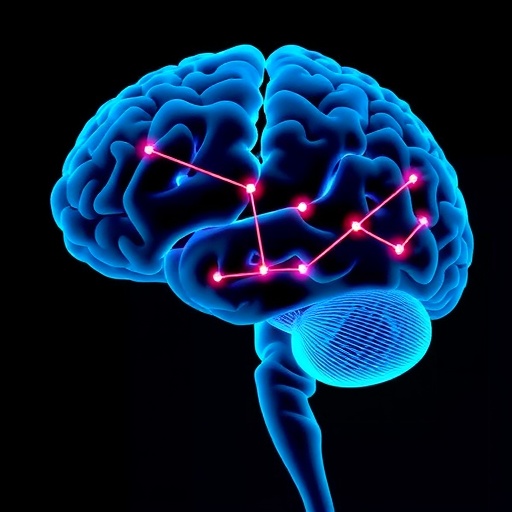Madrid, Spain, 14 June 2017: The results of a study presented today at the Annual European Congress of Rheumatology (EULAR) 2017 have confirmed that Fluorescence Optical Imaging (FOI), a technique used to visualise inflammation in arthritic joints, is as effective as ultrasound with Power Doppler (US / PD) at monitoring response to treatment in juvenile idiopathic arthritis (JIA). FOI was also found to be more effective than US / PD at detecting inflammation in the absence of symptoms and signs.1
To a certain degree, US / PD is acknowledged to be operator dependent and potentially limited in visualising very detailed inflammatory changes, such as altered blood flow in tiny blood vessels and / or capillary leakage, especially in very small finger joints. In contrast, FOI may provide greater information on the microcirculation in these joints. Also, FOI is a time-efficient and operator-independent imaging modality, which can be performed by nurses or other non-medically qualified personnel.2
"Accurate detection of inflamed joints is essential both to guide treatment decisions and to assess treatment efficacy in patients with JIA," said lead author Professor Gerd Horneff, from the Asklepios Children's Clinic, Sankt Augustin, Germany. "FOI may be used in clinical practice to accurately identify joint inflammation earlier and with greater confidence. It should be particularly useful in identifying those children with clinically non-apparent joint inflammation of the hands and/or wrists who need to start on anti-rheumatic drug treatment," he said.
In this study, out of 37 patients with polyarticular JIA, 24 were started on methotrexate and 13 on a biologic for the first time (11 on etanercept, 1 on adalimumab and tocilizumab respectively).
Clinical examination showed an effective response to these treatments with the percentage of affected joints in the hand and fingers reducing from 23.6% at baseline to 16.4% and 9.0% at week 12 and 24 respectively.
Measurements of disease activity also showed an effective response with a significant reduction in the mean Juvenile Arthritis Disease Activity Score from 17.7 at baseline to 12.2 at week 12 and 7.2 at week 24. The percentage of patients achieving JIA American College of Rheumatology 30 / 50 / 70 / 100 response rates at week 24 were 85% / 73% / 50% / 27% respectively.
Using ultrasound at baseline, week 12, and week 24, 19.4%, 16.1%, and 11.5% of the wrist or finger joints showed an effusion (fluid in the joint), 18.8%, 12.7%, and 9.6% showed thickening of the joint lining and, with the Power Doppler function, 6.9%, 1.8%, and 5% of the joints showed excessive blood flow (hyperperfusion), which are all signs of inflammation. Overall, any sign of arthritis was detected by US / PD in 24.5%, 19.2%, and 17% of joints at baseline, week 12 and week 24 respectively.
FOI images are interpreted in three phases: an early phase (phase 1) where the flow of dye into the blood vessels can indicate a higher perfusion, an intermediate phase (phase 2) where the dye stays longer in a pathological than a normal vessel, and a late phase (phase 3) where dye remaining in the tissues demonstrates more vessel formation due to chronic inflammation.
Among this patient population, FOI showed a signal enhancement suggesting active inflammation in at least one phase in 38.7%, 29.2%, and 27.6% of the joints at baseline, week 12 and week 24 respectively.
Summarising the data across all 3 time points, the highest number of signals suggesting active inflammation were detected by FOI with 32% of joints (especially in phase 2), compared to 20.7% with US / PD and 17.5% by clinical examination. A high number of joints (21.1%) had FOI signals suggesting inflammation, but were clinically inactive. 20.1% of joints with FOI signals did not show any effusion, synovial thickening or hyperperfusion on US / PD.
"The ability of FOI to detect inflammation in joints not detected by clinical examination or US / PD will be helpful in guiding treatment decisions based on determining the number of affected joints. Also, being able to discriminate between painful but uninflamed joints and those with inflammation will avoid unnecessary treatment with conventional DMARDs or biologics in the former," Professor Horneff concluded.
JIA is a chronic debilitating disease of childhood and adolescence characterised by arthritis persisting for at least 6 weeks with onset before the age of 16 years. The polyarticular form involves more than four joints within the first 6 months. The incidence of polyarticular JIA varies worldwide with a vast difference in reported cases between different global regions as well as within individual countries. The incidence of JIA ranges from 0.83 per 100,000 children in Japan to 23 per 100,000 in Norway, with low rates in Asian populations and relatively higher frequencies in those of European descent, with an overall trend that this rate is increasing.3
###
Abstract Number: OP0057
NOTES TO EDITORS:
For further information on this study, or to request an interview with the study lead, please do not hesitate to contact the EULAR congress Press Office in the Goya Room at the IFEMA, Madrid during EULAR 2017 or on:
Email: [email protected]
Onsite tel: +44 (0)7786 171 476 / +34 91722 3115
Twitter: @EULAR_Press
Youtube: Eular Press Office
About Rheumatic and Musculoskeletal Diseases
Rheumatic and musculoskeletal diseases (RMDs) are a diverse group of diseases that commonly affect the joints, but can also affect the muscles, other tissues and internal organs. There are more than 200 different RMDs, affecting both children and adults. They are usually caused by problems of the immune system, inflammation, infections or gradual deterioration of joints, muscle and bones. Many of these diseases are long term and worsen over time. They are typically painful and Iimit function. In severe cases, RMDs can result in significant disability, having a major impact on both quality of life and life expectancy.
About 'Don't Delay, Connect Today!'
'Don't Delay, Connect Today!' is a EULAR initiative that unites the voices of its three pillars, patient (PARE) organisations, scientific member societies and health professional associations – as well as its international network – with the goal of highlighting the importance of early diagnosis and access to treatment. In Europe alone, over 120 million people are currently living with a rheumatic disease (RMD), with many cases undetected. The 'Don't Delay, Connect Today' campaign aims to highlight that early diagnosis of RMDs and access to treatment can prevent further damage, and also reduce the burden on individual life and society as a whole.
About EULAR
The European League Against Rheumatism (EULAR) is an umbrella organisation which represents scientific societies, health professional associations and organisations for people with rheumatic and musculoskeletal diseases throughout Europe. EULAR aims to reduce the burden of rheumatic and musculoskeletal diseases on individuals and society and to improve the treatment, prevention and rehabilitation of rheumatic and musculoskeletal diseases. To this end, EULAR fosters excellence in education and research in the field of rheumatology. It promotes the translation of research advances into daily care and fights for the recognition of the needs of people with musculoskeletal diseases by the governing bodies in Europe through advocacy action.
To find out more about the activities of EULAR, visit: http://www.eular.org
Media Contact
EULAR Press Office
[email protected]
34-917-223-115
@eular_org
http://www.eular.org
https://www.eular.org/congresspressreleases/New_imaging_technique_may_help_identify_joint_inflammation_in_children_earlier_and_with_greater_confidence__OP0057.pdf
############
Story Source: Materials provided by Scienmag




